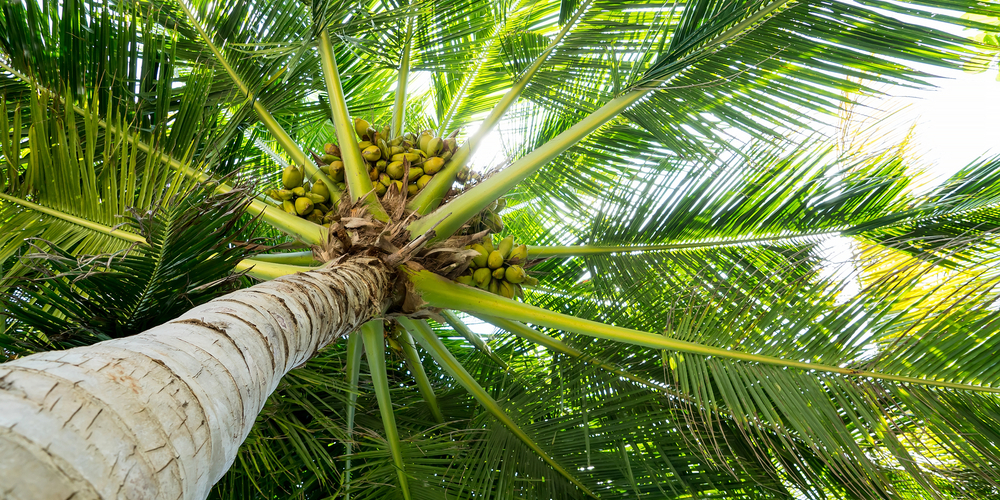When you think of palm trees, do coconuts come to mind? Probably. You may be wondering, ‘Do all palm trees have coconuts?’ Coconut and palm trees are two of the most iconic trees in the tropics. Coconut palms are immediately recognizable with their long, slender trunks and crowns of large, feathery leaves.
Palm trees, on the other hand, come in a wide variety of shapes and sizes, from the tall and stately royal palm to the squat and stocky bamboo palm.
However, a common mistake people make is assuming that all palm trees are coconuts.
While coconut trees are a type of palm tree, not all palm trees bear coconut fruits. With that being said, all coconuts are considered to fall under the palm tree category, but not all palm trees can be considered to be coconut trees.
The Truth About Coconut Trees
Traveler or not, it’s safe to assume that most of us have a pretty good idea of what palm trees look like. They’re widely seen in art, movies, and photographs; many of us have probably even seen them in real life.
The pop culture and media portrayal of palm trees often show them as being tall, with a single trunk and large leaves. And while this description isn’t entirely inaccurate, most palm trees don’t look like this. In fact, there are over 2600 different species of palm trees, and they come in slightly different physical forms.
However, there’s always been a common misunderstanding that all kinds of palm trees bear coconut fruits. We can’t blame people for thinking this way, as coconuts are often associated with palm trees, and the two are often spoken about in the same breath. In fact, some use both words interchangeably.
The word or term “palm” tree, in general, refers to any plant in the Arecaceae family. Typically found in tropical or subtropical regions, palms are characterized by their tall, unbranched trunks and large leaves. Florida, some parts of California, Hawaii, and other parts of the United States are home to many palm trees.
On the other hand, a coconut tree is just a part of the same Arecaceae family, but it falls under the Cocos genus. Thrives in USDA zones 11 and 12, and in most Southeast Asian countries, a coconut tree can grow up to 30 meters tall.
What’s the Difference Between the Coconut Tree and Palm Tree?
The coconut tree, or the coconut palm, one that bears coconuts, is considered to be the most widely cultivated palm tree in the world. Distinctly, coconuts and palm trees have several key differences.
The first and most obvious difference is in their fruit. Coconut palms produce coconuts, while other trees produce different fruits, such as dates, acai berries, saw palmetto, oil palm fruits, and betel nuts. It’s also easy to see why people often mistake palm trees bearing coconut fruits. Some trees bear coquitos – a type of fruit that looks like miniature coconuts.
Another difference between the two lies in their leaves. Coconut tree leaves are long and narrow, while palm tree leaves can be either long and narrow or wide and oval-shaped.
In terms of their trunks, coconut palms have a thicker trunk compared to palm trees. Additionally, their branches grow outwards from the trunk in a spiral pattern. Palm trees, on the other hand, have thinner trunks with branches that grow straight out from the trunk.
Do all palm trees have coconuts: Final Thoughts
It’s easy to assume that palm trees always produce fruit, but this isn’t the case at all. In reality, only coconut trees bear coconuts. Remember, all coconut trees are classed as palm trees, but not the other way around.
Do you think you can tell the difference between a palm tree and a coconut tree now? Share your thoughts in the comments section below!

